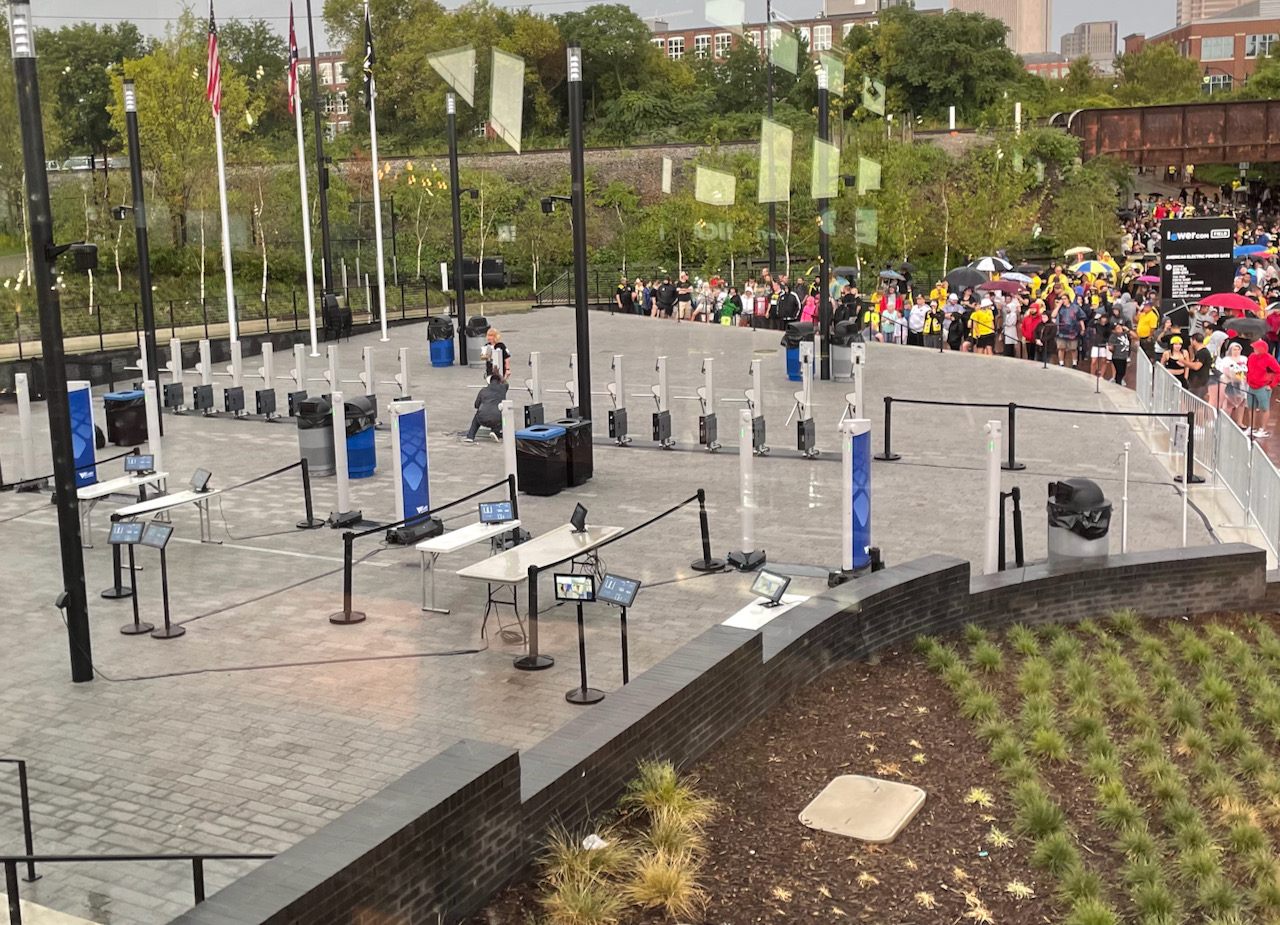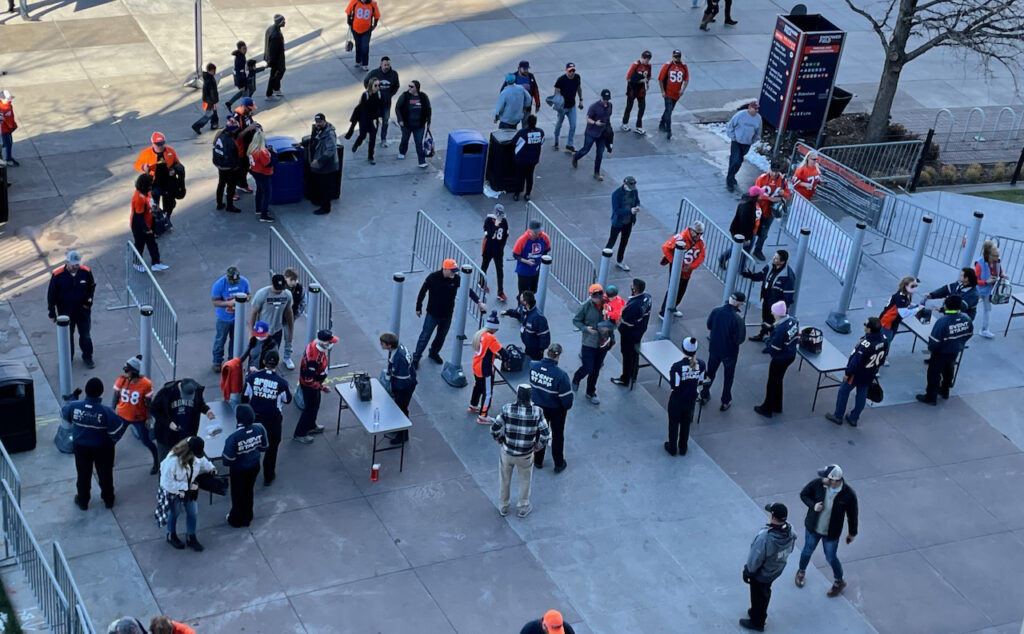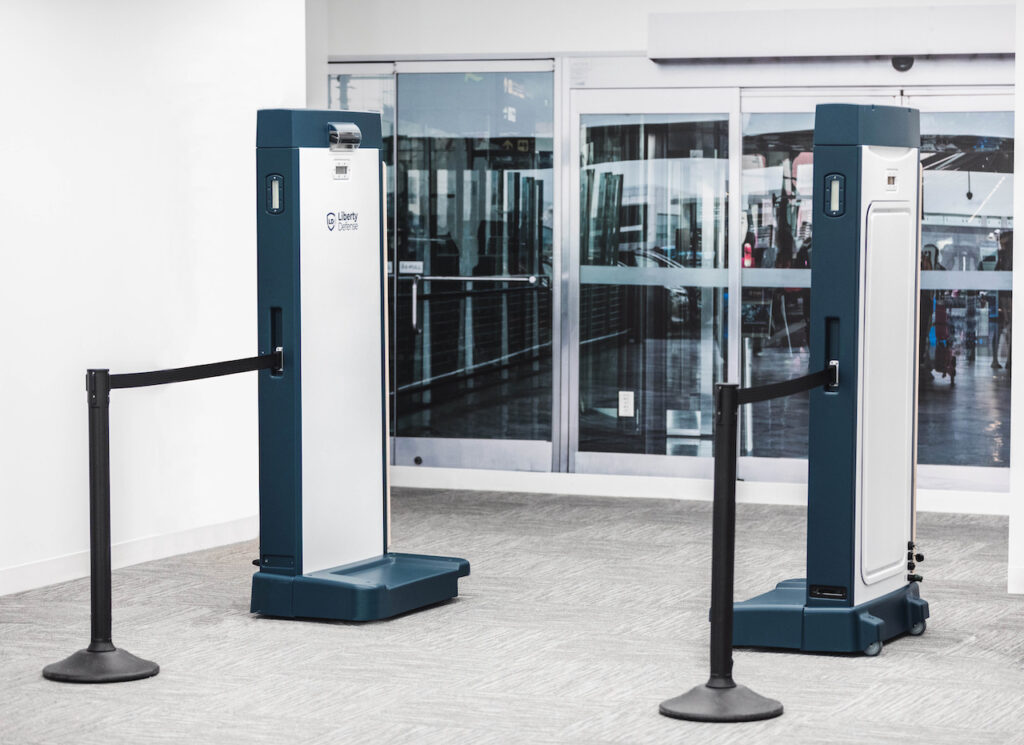
Put your keys back in your pocket. Keep your cell phone there, too. Keep your hands to your side and walk forward at a normal pace. Congratulations, you’ve perfected the new way to enter stadiums.
Using newer forms of radio-wave image detection or magnetic scanning, the claim for most of these new systems is that they can “see” weapons of all shapes and sizes, and then use artificial-intelligence (AI) software to compare images to known threats that are catalogued in digital databases. With claims of fewer “false positive” alarms and no need to “divest” metallic or any other items, these systems are designed in part to significantly speed up or even eliminate one of the bigger causes of stadium lines, namely the pre-game security check.
While security in many forms has always been present at large public events, the current era of having fans pass through airport-like detection systems before entering stadiums can be mainly tracked back to industry reactions to the Boston Marathon terrorist attacks in 2013, when bombs planted near the race finish line killed three people and injured hundreds more. Though there is no national standard or requirement for stadium security protocols, local safety laws, and procedures and guidelines from leagues and conferences have pretty much led all large venues to deploy airport-like metal-detector systems to keep fans, athletes and building workers safe from carry-in threats.

And though detection system operations differ widely from venue to venue, almost any fan can tell you a story about waiting in a long line while other fans go through the security screening process, with almost inevitable stoppages to find things in pockets or jackets that caused the sensors to emit the well-known “beep.” And while in the past fans might have been expected to wait out the delays with some degree of patience, in the Covid era of shortened tempers and increased willingness to flout protocols it has become even more important for venue operators to find ways to eliminate such pain points whenever possible.
Add into the equation a need by venues to detect new kinds of threats that are hard for metal detectors to find, like “ghost guns” that may have some parts manufactured out of plastic with 3D printers, or very small things like ceramic knives, and you have a market in need of new technology that can both speed up lines and detect more threats. According to suppliers of the new systems, that is just what they are offering — though given the early stages of development and the challenges of disrupting years of accepted behavior, implementing the new walk-through detection devices is far from an easy rip and replace.
Version 1.0 issues and the need for education
Editor’s note: This post is from our Stadium Tech Report Spring 2022 issue, which you can read online, or download a PDF of the full report.
On a visit to Lower.com Field last summer for a Columbus Crew MLS game, Stadium Tech Report saw the promise of walk-through weapons detectors in live action, as groups of fans simply streamed by the Evolv Express detection systems. If old metal detectors can only scan around 300 fans per hour — or five per minute — the new systems like Evolv’s clearly eclipse that figure by a wide margin. The very few “positive” tests we saw mainly seemed to be umbrellas that were being carried under coats, with an unusally high number of those present due to the monsoon-like storms that swept through Columbus just before game time.
In December last year at the Denver Broncos’ Empower Field at Mile High we saw a new security perimeter strategy unveiled, as the Broncos put the walk-through Opengate systems from CEIA a bit farther away from the stadium than their previous deployments of stadium-door metal detectors. The new setup allowed the Broncos to have fans quickly inside their security perimeter, in a wide-open space where they could utilize stadium Wi-Fi to download tickets in preparation for the digital ticketing entry gates.
“It’s not as simple as plug and play,” said Ward, referring to the deployment issues presented by the new security systems. “There’s going to be a learning curve.”
While both deployments seemed effective, the apparent simplicity of the new walk-through security systems belies the depth of the challenge for venues. Due to their radical difference in operation from past systems, the new ones will require venues to rethink their entire entry strategy, especially the relation between ticketing and security, to avoid causing more or worse problems than before. At some venues this past fall such problems did occur, as the speeded-up security process overloaded the ticketing gates, causing logjams.
Putting aside for a minute whether or not the systems work as advertised, the biggest issue most venues are likely to face is the education needed, mostly for operations staff but also for fans. It’s actually kind of amusing to watch fans on their first trips through the systems, as years of being taught to stop, raise hands, and maybe take things out of pockets is a hard lesson to unlearn. At all venues we’ve seen so far, part of the new security-systems staff job is to tell people to just keep walking and keep things in their pockets.
And while almost every vendor touts that their systems will reduce the number of security staff needed — another plus in this era of hard-to-hire reality — the flip side of that equation is that the staff need to be more thoroughly trained and sometimes more stern to react since people who trigger a positive test at a walk-through system may not know it and may need to be stopped from walking away, for a secondary scan. While our live experience is limited, it seems like every vendor deployment so far is a work in progress, with physical entry structures and available entry space sometimes a contributing factor. Several of the vendors we spoke with are also making changes to their systems to better help fans and staff comply with positive warnings, like adding louder beeps.
“The industry is still trying to understand best practices with staffing” for the new systems, said Daniel Ward, director of training and exercise for the National Center for Spectator Sports Safety and Security at the University of Southern Mississippi. Known as NCS4, the group, which conducts “research, training, and outreach programs” for the industry on products, services and best practices, is actively testing the new walk-through systems as they are deployed, according to Ward.
“It’s not as simple as plug and play,” said Ward, referring to the deployment issues presented by the new security systems. “There’s going to be a learning curve.”

And then, there is the question about whether the systems really work, and if they are indeed safer than metal detectors. Since most people have at some point experienced a “positive” alarm while going through a metal detector — for whatever reason, either a device in a pocket or perhaps a belt buckle or medallion — there is generally a high level of confidence and belief that while sometimes onerous, the systems do work as advertised and thereby do provide fans some assurance of safety.
Contrast that experience to what fans encounter with the walk-through systems, where nothing seems to be happening, and it’s understandable that some may doubt that such detection is possible (especially when even some of the newer airport-screening systems still require people to stand still with hands raised). In this sense, the new providers of weapons detection systems do themselves no favors by being somewhat coy about how their products actually work.
While there is kind of a “Fight Club” type of silence around stadium security technology and strategies in general — for instance, Stadium Tech Report did not get any response to requests for interviews with security executives from any of the top U.S. professional sports leagues — it may be understandable since to fully describe such systems may be providing too much information to potential bad actors. In a similar vein, most of the companies we contacted were somewhat vague about the exact technologies their systems use, preferring instead to talk about capabilities than about the inner device workings. The reluctance to provide such information, however, puts more of a burden on team and venue security staff to dig deeper during purchasing negotiations.
Investment money sees a future for walk-through systems
If deployments of such systems are at the earliest stages, so too is the technology itself. Peter Evans, chief executive officer of systems provider Patriot One, compares his company’s current offering to the iPhone 3, while predicting that improvements to the technology will come as quickly as new smartphones do.
“There will be a path” to improved technology, Evans said, with security systems perhaps even incorporating ticketing and other venue-specific needs like vaccination checks, going forward.

While fans seem to like the new systems — we have heard rave reviews from attendees at venues using the new devices — what may be more important from a business point of view is that investors also think there is great promise in the systems. While industry giant CEIA (which manufactures many of the current metal detectors in use at stadiums today) most likely has enough resources to compete on its own, the startups in the field are also attracting attention in the most important way, with investor cash.
Evolv actually went public last year on the NASDAQ exchange through a SPAC (special-purpose acquisiton company) deal that netted the company approximately $385 million in working capital. Patriot One, which is based in Toronto, Canada, was as of this writing going through a public share offering designed to raise approximately $7 million (in Canadian dollars). And Liberty Defense, which produces the Hexwave detection systems, in March raised approximately $8 million (in Canadian dollars) in funding bringing its total funding to approximately $35 million CAD.
“In our opinion, [the new technology] is far superior,” Downing said. “The upside is huge.”
Mike Downing, chief security officer for Prevent Advisors, the security arm of venue operations giant the Oak View Group, said that OVG CEO Tim Leiweke called the walk-through systems the biggest venue technology innovation in the last 50 years. OVG has deployed Patriot One systems at Climate Pledge Arena in Seattle, where the systems are currently being tested as they await approval from the NHL for use at Seattle Kraken games. The Patriot One systems were also in use at the recent opening of the Moody Center, the new arena-sized venue at the University of Texas, managed in part by OVG.
According to Downing, OVG is “working very closely with Patriot One on a number of deployments,” with those deployments in different stages of planning and deployment. But overall, Downing said that the move toward walk-through systems in general is a positive.
“In our opinion, [the new technology] is far superior,” Downing said. “The upside is huge.” So keep your keys in your pocket, and walk forward — to the future of stadium security screening.
Editor’s note: Please see our sidebar with profiles of the leading providers in the weapons detection marketplace.







